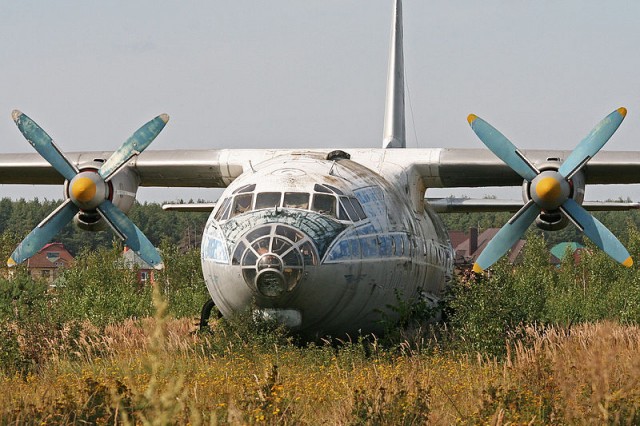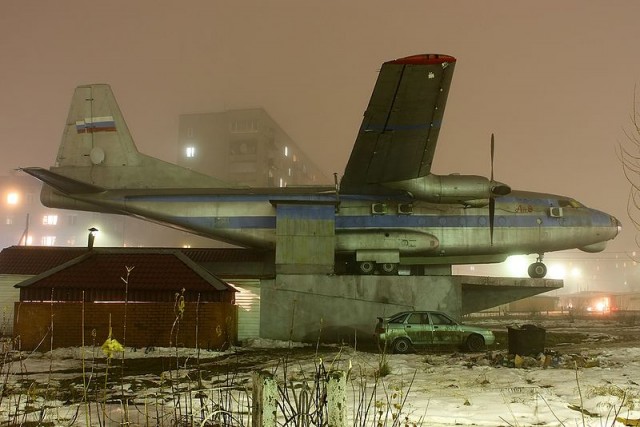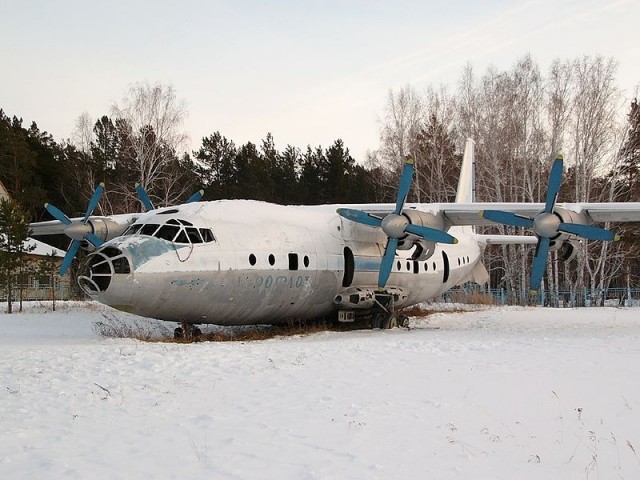When most people think about Soviet, four-engine, turbine passenger aircraft, they tend to think about the “classics”; the IL-18 and the Tu-114. There are reasons, of course, why the Antonov AN-10 doesn’t immediately jump to mind – but that ignores the significant contributions it made to domestic travel within the Soviet Union.
The Tupolev Tu-104 was a great aircraft, and when prestige mattered more than unit cost, it was a perfect way of showing Soviet aeronautical achievement abroad. Russian flag carrier Aeroflot, however, was directed to offer cost-effective transport to all points within the Soviet Union and satellite states. There was another issue; the Tu-104, while durable by early jet standards, was still difficult to maintain after frequent operations on “less prepared” airfields.
Antonov, a Ukrainian design firm (or OKB, in Russian-speak), had a twin-engine cargo aircraft known as the AN-8. Consider the AN-8 to be analogous to the American C-123. Well…if a C-123 had Kuznetsov engines. Antonov had always hoped to translate the AN-8’s momentum into an order with Aeroflot, but it never came. In the end, the pressurized AN-8 variant was given another two engines, a stretch, and was rebadged as the AN-10.
The AN-10 prototype first flew on March 7, 1957. Unlike production versions, it was powered by Kuznetsov NK-4 engines. Politics got in the way, and it was decided that serial aircraft would be fitted with Ivechenko AI-20s – the same engine as the IL-18. Whilst the NK-4s had slightly higher shaft-horsepower, the AI-20s would turn out to yield longer service life. In other words, this political change probably helped the design. The NK-4-powered prototype proved to be extremely unstable. Ventral fins and a higher tailplane were added. In 1958, Antonov would like you to remember that the AN-10 was awarded a big golden medal and diploma for its design at the Brussels World Exhibition. They would also like to remind you that their bird, in some ways, was the world’s first widebody passenger aircraft. When the first production bird entered service in 1959; it was apportioned with 85 “luxurious” seats. However, because the AN-10 was based off of a cargo aircraft, this configuration was fraught with wasted space. So much wasted space, in fact, that it was difficult to accomodate passenger baggage.
Meanwhile, things were not going well for the first AN-10As in service. As winter began in Ukraine, a fatal icing problem on the tailplane was discovered in the worst possible way. First, there was the crash in Lviv on November 16, 1959. Then, there was the crash (also in Lviv) on February 26, 1960. 72 passengers and flight crew died before a de-icing system was installed on the remaining AN-10 fleet. Not only that, but the stability problems had never been truly resolved. They were still cheaper to operate than the Tu-104, but it would turn out that they were carrying a significantly lower load than the smaller IL-18. The AN-10A’s capacity grew from 85, to 100, to 117, and finally to 132. This was done by decreasing seat pitch and seat width. It could finally seat more passengers than an IL-18! Unit costs were comparable at last. The AN-10A would finally be seen as a serious contender for Aeroflot.
Unfortunately, production ended in 1960, with a total of 120 aircraft being manufactured. The AN-10A’s end was in Kharkiv, Ukraine. Both wings fell of on approach to the airport. 122 people were killed in that accident. The stringers in the center sections of the wing were not prepared to properly deal with fatigue cracking. This problem turned out to be fleet-wide. The AN-10A was grounded thereafter. Several AN-10s are kept in museums, and it is alleged at least three have been converted into children’s theaters (odd, right?).
The thing is, the AN-10 had a terrible reputation amongst passengers in the Soviet Union, when it actually was less-lethal than its contemporary, the IL-18. In 12 hull-losses, only 370 people perished. Over the same service-period, the IL-18 had 51 hull-losses and killed 1359 passengers and crew. Having said that, both aircraft lost ten percent of their total production run due to crashes. Before the fatigue issues, the AN-10 was really just a victim of media sensationalism and bad marketing.


